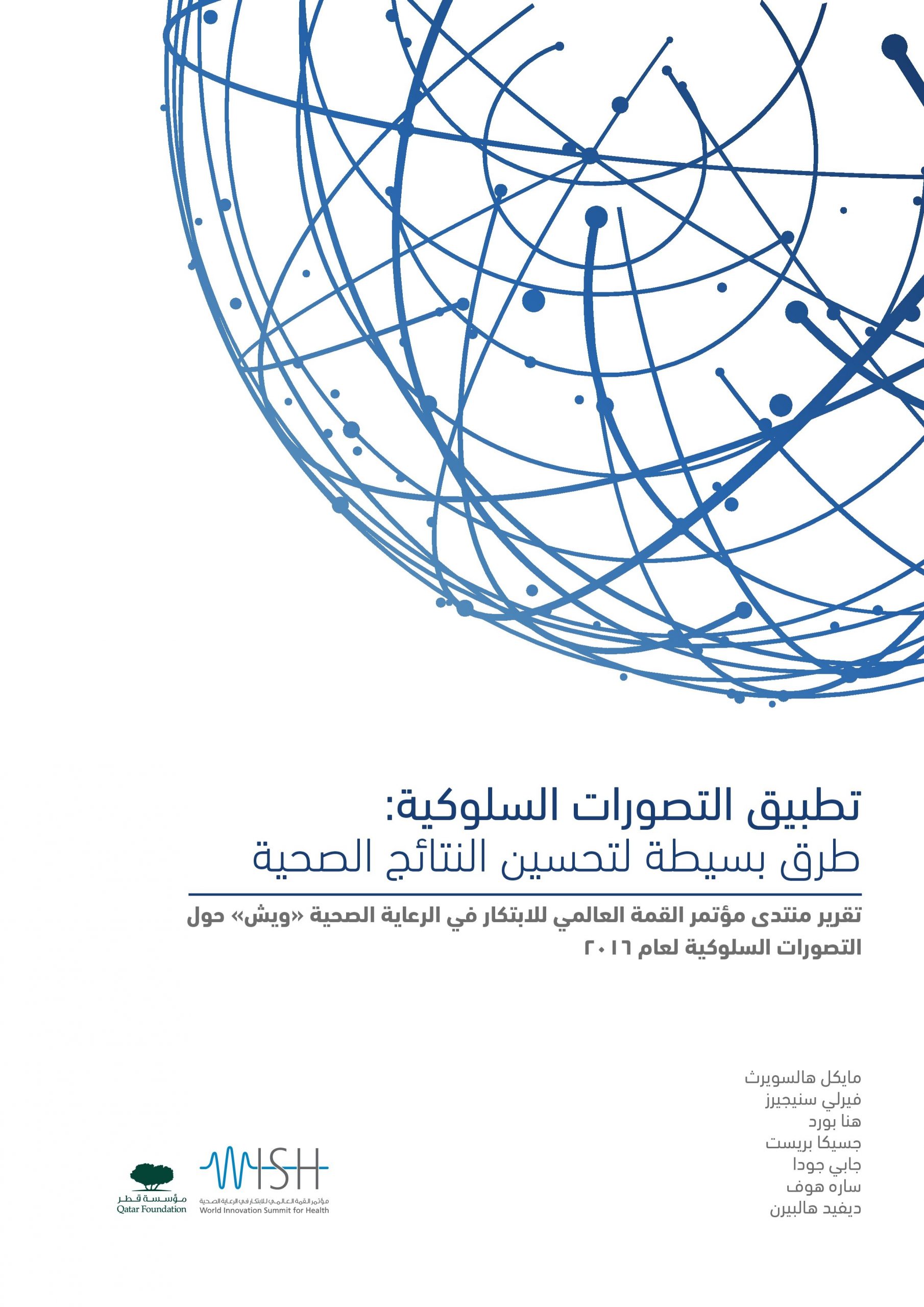ملخص تنفيذي
Applying new insights about behavior can lead to better health outcomes at a lower cost. This report gives an overview of these insights and shows how they can be applied in practice. It has four key messages:
- In order to improve health outcomes, we need a better understanding of behavior
There are three main areas where a lack of understanding or attention to human behavior causes problems in the health sector:
– Public health. Much of the global burden of disease arises from unhealthy behaviors, but people still struggle to change these behaviors – even if they have the awareness, intention and ability to do so.
– Healthcare provision. Healthcare systems are often designed in ways that facilitate errors and poor decision-making by health practitioners.
– Policy decisions. Policy processes may lead policymakers to make suboptimal decisions – for example, by treating evidence in a biased or inconsistent way.
- Behavioral insights offer new solutions to policy problems
Research from the last 40 years shows that our decisions are often not deliberate and considered, but habitual, automatic and heavily influenced by the environment in which they are made. These factors are often neglected in traditional policy analysis. Applying these behavioral insights can unveil new and better ways of achieving policy goals, as well as enhancing existing policy tools (like making laws or providing incentives). Governments around the world are increasingly doing this, but there is the potential to go much further
- Behavioral insights can improve health and healthcare
The Easy, Attractive, Social and Timely (EAST) framework is a simple way of applying behavioral insights to policy and making behavior change more likely:
– Easy. We want to avoid expending effort wherever possible. For example, because we often avoid making an active choice, we often end up with the ‘default’ option. Therefore, making the default option the healthy one is likely to be effective: if the default option is to receive an HIV test, then testing will be much more frequent than if the default is to not receive one. Requiring even small amounts of effort (’friction costs’) can make it much less likely that a behavior will happen. For example, making it just slightly more difficult to obtain large amounts of over-the-counter drugs has been shown to greatly reduce overdoses.
– Attractive. Our attention is limited and so we need new ways of attracting it. One way of doing this is to identify the messages that work best. For example, a study in the United Kingdom (UK) found that missed hospital appointments could be cut by a quarter if a reminder stated the specific cost of a missed appointment to the health system. Another way is to attract attention through visual or spatial design: accidental deaths on railways in India were cut by painting reference lines on railway tracks to make it easier for people to judge the speed of trains.
– Social. Humans are social beings who are strongly influenced by what others do – ’social norms’. Making healthy behaviors more visible can make them seem more prevalent and easier to copy. For example, the ‘Ebola handshake’ that was introduced in Nigeria to reduce physical contact (and thus the spread of disease) acted as a highly visible replacement greeting. Even simply telling people what others do in the same situation is effective – doctors prescribed antibiotics at a lower rate when told that most of their peers were doing this.
– Timely. People are more receptive to changes at some times than others. Therefore, some moments will be more effective times for intervention, such as religious or cultural holidays, the start of the year or significant life events. For example, a successful diabetes screening program in Qatar timed the intervention (which required fasting) to coincide with Ramadan, when many people were fasting anyway.
The EAST principles apply equally to policymakers themselves. Those who are making health policy should consider how their own actions may be affected by these factors, and how to apply them to ensure policy is made in the best way.
- Trialing interventions brings important advantages
Since behavior is complex, context is powerful, and details matter, we cannot be sure of the exact best way to implement interventions. Therefore, it is important for policymakers to incorporate simple trials to evaluate the effect of behavioral interventions on healthcare services. These trials are often cheap and can deliver results quickly, particularly if routinely collected data is used
Trialing interventions like this has shown that behavioral insights can make a real difference to healthcare systems. Trialing also shows when, how and for whom interventions work best – since the size and duration of their impact can be affected by cultural differences and details of implementation.
The ideas and examples in this report can be used by anyone involved with healthcare or public health. However, we think that the report will be particularly valuable to policymakers who are responsible for designing and stewarding health systems.
There are many opportunities to improve health and healthcare worldwide by applying behavioral insights. Many of these opportunities can be realized by applying simple tools to make practical changes. We encourage policymakers to use these tools.

